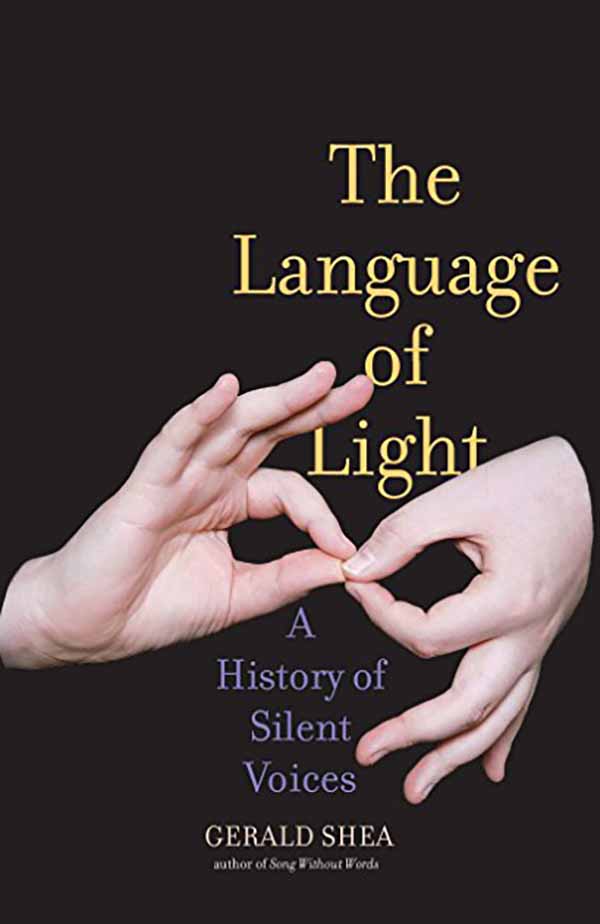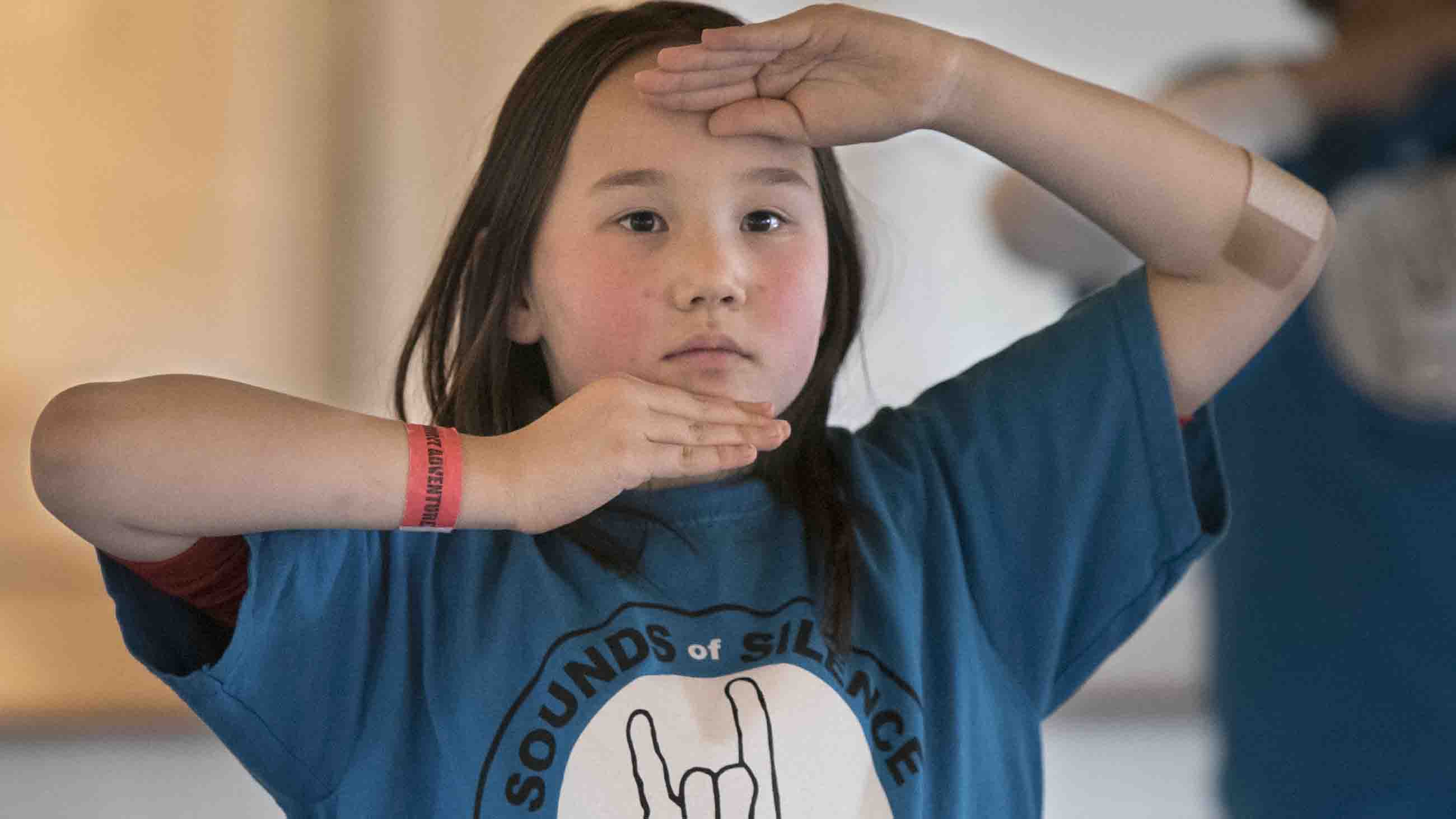When Gerald Shea was 6 years old, a bout of scarlet fever left him partially deaf, though he was not formally diagnosed until turning 34. His disability left him in a liminal space between silence and sound; he grew used to the fuzzed edges of words, the strain of parsing a language that no longer felt fully native. Years ago, he began combing historical records on deafness to lend context to his own experience. But his research turned up something unexpected: a centuries-long procession of leaders and educators who stifled the deaf by forcing them to conform to the ways of the hearing.

BOOK REVIEW — “The Language of Light: A History of Silent Voices,” by Gerald Shea (Yale University Press, 288 pages).
That is the driving impetus behind “The Language of Light,” Shea’s history of deaf people’s ongoing quest to learn and communicate in signed languages. “Theirs is not an unplanned but a natural, visual poetry, at once both the speech and the music of the Deaf,” he writes. (He capitalizes the word to refer to people who consider themselves part of the deaf culture and community.) In conveying the unique cadence of this silent music — its intricate grammatical structure, its power to express an infinite array of ideas — Shea underscores the tragedy of its suppression.
From the outset, he confronts us with a rogues’ gallery of those who suppressed it. During the Middle Ages, self-appointed therapists crammed hot coals into the mouths of deaf people, pierced their eardrums, and drilled holes into their skulls, all in a vain effort to force them to speak. In what was at the time Holland, Johann Conrad Amman moved the lips of his deaf charges into the shapes needed to make certain sounds, but the effort was largely fruitless because they could not hear the sounds they were making. The “silent voices” of Shea’s title has a double resonance: Not only did many deaf people remain literally mute from their disability; their potential to express their ideas fully through sign language went untapped.
Things briefly improved during the Enlightenment, which some have called a golden age of deaf education. In Paris, the priest Charles-Michel de l’Épée became the first to teach the deaf in the signed languages that came to them so intuitively, and his successor Roch-Ambroise Auguste Bébian continued his efforts to educate using signs. They were richly rewarded when their pupils began to read, write, and express themselves in sophisticated ways, proving that old ideas about deaf intellectual deficiency were bunk.
A stunning backlash came during the 1800s, however, in the form of so-called oralists like Alexander Graham Bell. Best known as the inventor of the telephone, Bell claimed that learning sign language interfered with learning spoken English. All deaf children, he and like-minded others believed, should be taught to speak, even if they had no idea how words sounded. He feared that if the deaf were permitted to communicate in signs, they would associate only with one another, and “establish[ment] of a deaf race [would be] only a question of time.”
The drawbacks of oralism, Shea argues, are evident even in the impressive person of Helen Keller, who has become a symbol of persistence in the face of challenge. Countless hours were spent teaching Keller to speak, but despite these efforts her speech remained quite difficult to understand. For Keller, though, the problems went even deeper. Shea’s disquisition on who really plagiarized a short story called “The Frost King” — Keller or her teacher, Anne Sullivan — seems beside the larger point: that Keller was at times the mirror of her teachers’ perceptions about the world, rather than the conveyor of her own. When Keller unspools something Sullivan taught her — perhaps about horses “with bridles ringing and whips cracking,” or a frog who “made the summer nights musical with his quaint love-song” — we get a sense of the artifice at play, of how Keller has been encouraged to inhabit someone else’s idea of a suitable self. Shea wonders what Keller’s genuine observations would have been if she had first been educated in the tactile signed language of the deaf and blind, rather than in the letters and common phrases of oral speech?
Shea’s recounting of oppressive attempts to teach deaf people grounds his analysis of the imprints such practices have left on contemporary deaf education. Some strides have certainly been made: Today’s finest deaf schools, such as Gallaudet University and the Rochester School for the Deaf, teach students in sign language. But while it’s easy to assume that deaf children in the U.S. now learn American Sign Language (ASL) as a matter of course, Shea points out that this is not so in most mainstream schools.
Technology hasn’t yet made sign language obsolete, either. Shea makes the surprising case that cochlear implants — however significant their advantages over hearing aids — are hardly the cure some proponents claim. While people who lose their hearing after learning spoken English may be able to get by with the implants (which is no small achievement), children who are profoundly deaf from birth tend to have poor outcomes when implanted, typically showing deficits in self-expression compared with signing peers. Parents who opt not to give deaf children cochlear implants are judged harshly, but Shea argues that for some children, the implants can actually be an impediment.
Not only is “The Language of Light” a thorough history of deaf language and education, it is a keen look at the ways people’s worlds can be circumscribed by powerful others who think they know best. In Shea’s telling, we come to see forced oralism as the figurative foot-binding it really is. To be sure, efforts to teach deaf people to master spoken language, to guide them toward acceptance in a wider community, can be useful — particularly when students have some degree of hearing. But when the goal of fitting in is pursued to the exclusion of adequate modes of expression, it becomes limiting rather than freeing.
Like other activist groups, the deaf have often been portrayed as too in-your-face, too bristling, too difficult to deal with. But as Shea’s searing narrative reminds us, such advocacy stems from the horrific past consequences of letting ill-informed “experts” take the lead in deaf education. In light of the human potential that has already been lost, impassioned self-defense is not just sensible but necessary.
Elizabeth Svoboda is a freelance writer based in San Jose, California.











Comments are automatically closed one year after article publication. Archived comments are below.
WOW! A very eloquently written article! I’m profoundly deaf and prefer to communicate in sign language. I truly appreciate essays such as this one, composed by Elizabeth Svoboda. To expertly articulate such a rich history interwoven with harden grief through a fluid orchestra of words illustrate a foundation of strength and skill that simply cannot be dismissed nor invalidated. Just…..WOW!